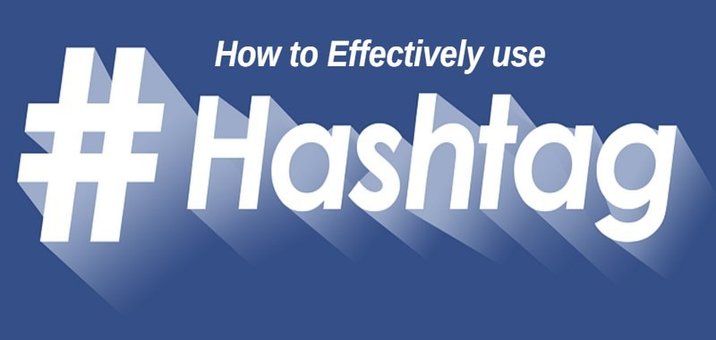By now in 2016 we are all familiar with hashtags, but do you know how to effectively use hashtags properly? Once the hashtags (# sign used to group content on social media) are used correctly, finding relevant content becomes much simpler. They can increase your social shares as well as helping your message get more visibility. If you use them the wrong way they can adversely influence your reputation on social media and as a result have a negative impact on your social media engagement.
Hashtags are very popular on Twitter but beyond this social network, they become more complicated.
We’ll now take a look at some of the confusion surrounding hashtags.
● The do’s and don’ts of hashtags.
● The best ways to get your message out using hashtags.
● What works best on each social platform.
What Are Hashtags?
Since hashtags first appeared on Twitter in 2007, media experts and marketers have been baffled by them.
Hashtags are actually used to lump social media content into various categories that make the content easy to navigate. When you tweet #[CONTENT KEYWORD], it appears in other content that has similar hashtags.
Exploring Social Media Content Using Hashtags
Finding existing hashtags are the best way to set up new hashtags.But for that to work, you will have to pinpoint the existing hashtags. The good news is that you can take advantage of current tools to do this job.
Here are some tools you can use starting today:
Use Twitter Research Trends For Hashtags
Want to find out which hashtags have been trending for the past 30 days? Use What The Trend. This is an excellent way to attract new viewers by locating relevant, targeted hashtags that are trending.
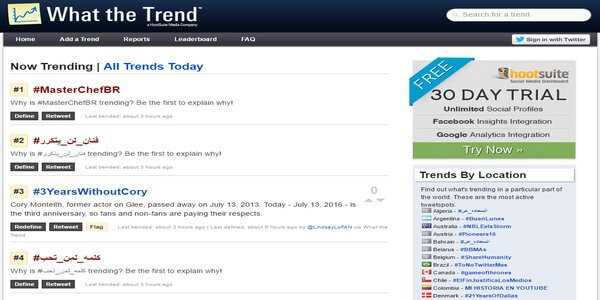

Use Twitonomy To Locate Twitter Hashtags
Twitonomy will allow you to uncover unique hashtags that are related to the subject matter you publish on your Twitter accounts. You can also uncover the major influencers using a specific hashtag, and who’s interacting with the content the most.
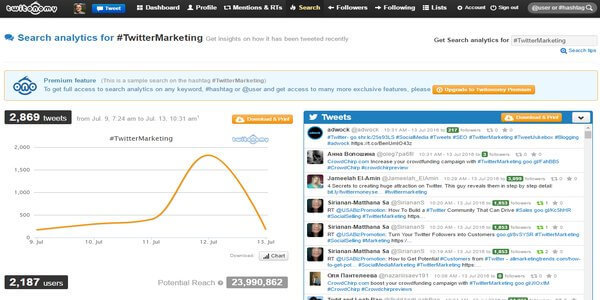

You will have to pay to access the premium features, which are affordable.
RiteTag Uncovers Hashtags For Facebook And Twitter
In addition, RiteTag provides real-time usage data to demonstrate the way hashtags are operating. You get more functionality with the premium options, but there are still great features with the free plan.
Think of RiteTag as a highly effective and useful tool when it comes to tracking and researching.
Hashtagify.me Is A Great Way To Find Twitter Hashtags
Hashtagify.me is yet another very useful tool for uncovering hashtags that are trending on Twitter. You can also choose to have updates emailed to you on hashtags that are trending. They provide a wide range of accounts from personal to enterprise and the plans range from free to premium.
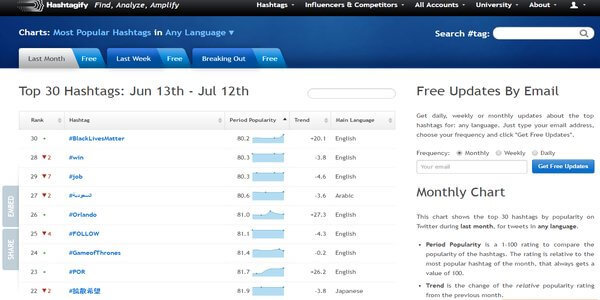

Discovering Hashtags Directly On The Various Networks
Discovering Hashtags On Twitter
On your Twitter news feed on the left side, you will find what is currently trending and links to relevant tweets.
In the Twitter search bar, you can use known hashtags to find relevant tweets. That way you can find targeted relevant content that you can easily share.
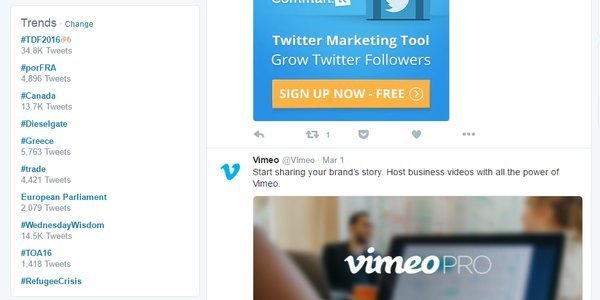

Uncovering Hashtags On Instagram:
Once you have the Instagram app opened, locate the magnifying glass image on the home page:
Once there you will be able to search the hashtags that are trending:
Locating Hashtags On Facebook:
You are able to use the Facebook search bar to find hashtags:


Trending topics are not the same as trending hashtags and this is confusing sometimes.
Although trending topics might be useful as it appears on your Newsfeed’s right side, keep in mind they are NOT based on hashtags.
Finding Hashtags On Google+:
Once you insert a hashtag into your Google+ content, you will get a list of hashtags that are relevant to your content. This is a great way of locating related hashtags for your post.
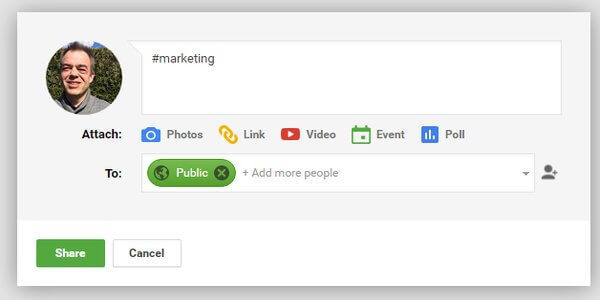

How To Find Hashtags On Pinterest:
You are able to use Pinterest search to find hashtags that can be used for tagging and discovery.
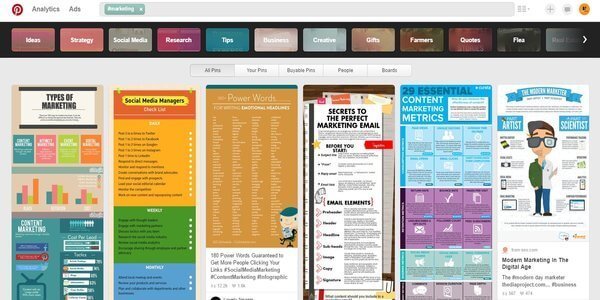

Once a hashtag is searched, other pins that have keywords or descriptions that are similar will be displayed in the search results (which also include pins with similar terms within the URL, image name, or product page related to the Pin).
Using Hashtags On YouTube:
Hashtags are usually in the comment areas on YouTube. You can do a hashtag search for trending or popular video topics.
Previously when you clicked on a hashtag in YouTube you were taken to related posts in Google+, but now you are taken to a page on YouTube:
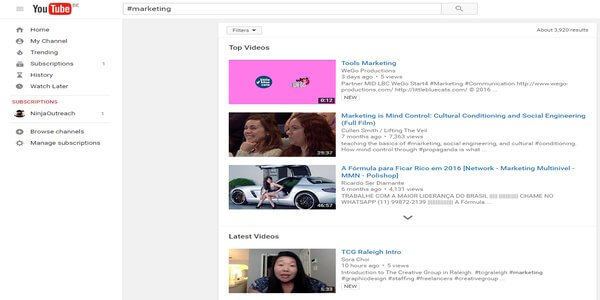

Using Hashtags On The Various Social Networks
The Best Way To Utilize Hashtags On Facebook
Do you actually need to use hashtags on Facebook?
Research has shown that hashtags on Facebook do not improve engagement. In other words, it might actually be better not to include hashtags at all. A recent study showed that posts which included hashtags only got .80% viral reach. On the other hand, posts that didn’t include hashtags received a viral reach of 1.30%.
Furthermore, hashtags are not recognized in the Facebook search bar. You can only find hashtags by clicking on the hashtag in the content of the post.
Using Hashtags On Twitter
Go with a maximum of 2 hashtags per post as user engagement has been shown to grow by 21%, but that drops to 17% if you use 3 or more hashtags in a single post.
The same is true for your Twitter bio, don't overuse hashtags. Never fill your bio with only hashtags.
Using Hashtags On Instagram
Images with over 11 hashtags often get the most user engagement, but if you overdo it, it can come across as spammy.
Using Hashtags On Pinterest
On Pinterest, results will show for keywords within your hashtags. For instance, a Pin description with a hashtag will lead followers to posts closely related to those keywords and not to just for that particular hashtag.Pinterest does not necessarily index the hashtags you selected to use.
Fewer hashtags on Pinterest seem to perform better. Research has shown that Pinterest will reduce your Pins’ value if it has an excessive number of hashtags. Additionally, customized hashtags seem to the best way to utilize hashtags on Pinterest. This approach directs visitors to your own personal Pins as opposed to directing them to a wider topic related to your hashtag.
Using Hashtags On YouTube
As stated on SproutSocial, the comments areas are the most popular place to use hashtags on YouTube. Hashtags can be used to group your content by topic, which uses keywords as the basis for your hashtags.
Boost the popularity of your videos on YouTube by posting related hashtags in the comment area of your videos. When a viewer clicks on the hashtags in the comments, they will be taken to a page with that hashtag in their title.
The Best Ways To Make Your Own Hashtag
At some point, there could be a need for you to make your own hashtag. There might be an event you want to compliment and that way your followers can track your later social posts. Perhaps you have a marketing campaign you want to make unique with its own hashtag.
Whatever the case might be, we suggest the following:
Great hashtags are:
● Unforgettable.
● Original.
● Related to the information you’re sharing.
Be balanced:
● It should be original but easy to remember.
● Keep your hashtag specific so they are easy to track.
Best Practices For Hashtags
1. Be aware of Correct Hashtag Etiquette On The Various Social Networks
Hashtags on Instagram tend to be more focused on related topics or descriptions. But, hashtags on Twitter are more geared towards a theme or discussion. Familiarize yourself with the way your unique target market makes use of hashtags on their social networks. Once you have done that, engage in the discussion appropriately.
2. Apply Hashtags That Are In Line With Your Brand
You might want to use the latest trending hashtags, but you are better off using your own hashtags that are in line with your brand. Really think about the hashtags that apply to your brand's message, content, image and target audience. Let's say your target audience is over 40 years old, hashtags that use youth slang will not work well for your brand.
3. Make Hashtags For Marketing & Advertising
Running a marketing and advertising campaign? Hashtags are a great way to get the word out.
4. Use Short & Original Hashtags
You only get 140 characters on Twitter, therefore your hashtags need to be short otherwise people will not use them as it will reduce the amount of content and links they can post. Too much or overly long hashtags will not get you more attention, it will have the opposite effect.
This pretty much goes for the other social networks too. Even on networks where the hashtag length isn't important, you should still keep it short and unique. Shorter and snappier is always better.
5. Capitalize The First Letter Of Every Word
In a long hashtag like this #whenyouputmanywordstogether, it becomes jumbled up and is hard to read.
However, if you capitalize the first letter of every word like this #ButIfYouCapitalize , reading it is much easier and you can recognize each word in just a glance. There is no case sensitivity for hashtags, therefore capitalizing the first letter of every word makes the hashtag more readable.
6. Make Use Of Hashtags In Twitter Chats
Twitter chats are web based events focusing a full discussion around a hashtag. They’re a powerful way to develop meaningful connections with your target market and promote engagement with a brand related hashtag.
Common Mistakes To Avoid When Using Hashtags
These tips are simple and some of them might be new to you. However, if you fall into the trap of these mistakes, your social engagement will suffer and your message won't get across.
1. Never Use Spaces Or Odd Punctuation
Always go with #SuperBowl instead of #super bowl. Social networks will only pick up the first word. Punctuation marks should never be used. Numbers can be used if there is some text such as #sdmg16.
2. The @ Symbol Is NOT Allowed In Hashtags
The purpose of your hashtags isn't to tag the users of your network. Therefore if you combine the @ symbol with your hashtag, you will only tag that specific user and your hashtag won't be delivered at all.
3. Too Many Hashtags Is Not Good
#It #Would #Be #Very #Annoying #To #Have #To #Scan #Over #Thirty #Hashtags #To #Find #Out #What #They #Mean.
4. Never Spam
Some people, brands, and websites applied popular hashtags on their social post without those hashtags being relevant to their content, just to boost their posts.
This approach worked initially for a short time, but Instagram caught on and cleaned up spammy accounts and some people lost a huge following overnight. Needless to say, this approach does NOT work anymore.
5. Do Your Hashtags Have The Meaning You Want?
Be careful as hashtags usually, refer to cultural trends or events in the news. It is always a good idea to do a bit of research before using a hashtag to make sure you are not associating with unrelated content.
6. Be Sure Your Hashtags Actually Work
Your hashtag will not work if it has punctuation or a symbol in or after the hashtag. For instance, if your intention was to post #I’mback, the networks will only read #I. When the blue text turns black you will know you have a broken hashtag and you will need to edit it before sending it out.
Numbers or Letters right before the hashtag will make it unusable. For example, 123#abc will not link to abc and won't work at all.
Hashtags of only numbers will not work either, but if you toss in a letter or two it will link properly. Therefore #12345 will not work however, #123abc will.
If You Want To Increase Brand Awareness Make Use Of The Above Tips
Your social media engagement and message can be adversely affected if you use hashtags incorrectly.
Knowing when, where and how to make use of them is critical. With the above tips, you now have a solid foundation on which to build!
Do you have any great ideas on how to effectively use hashtags,please share in the comments below.

